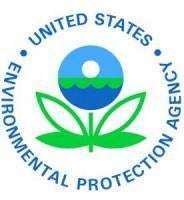WASHINGTON – The U.S. Environmental Protection Agency (EPA) on September 28, 2011 released the final health assessment for trichloroethylene (TCE) to the Integrated Risk Information System (IRIS) database. IRIS is a human health assessment program that evaluates the latest science on chemicals in our environment. The final assessment characterizes the chemical as carcinogenic to humans and as a human noncancer health hazard. This assessment will also allow for a better understanding of the risks posed to communities from exposure to TCE in soil, water and air. It will provide federal, state, local and other policy makers with the latest scientific information to make decisions about cleanup and other actions to protect people's health.
"This assessment is an important first step, providing valuable information to the state, local and federal agencies responsible for protecting the health of the American people," said Paul Anastas, assistant administrator for the EPA's Office of Research and Development. "It underscores the importance of EPA's science and, in particular, the critical value of the IRIS database for ensuring that government officials and the American people have the information they need to protect their health and the health of their children."
TCE is one of the most common man-made chemicals found in the environment. It is a volatile chemical and a widely used chlorinated solvent. Frequently found at Superfund sites across the country, TCE’s movement from contaminated ground water and soil, into the indoor air of overlying buildings, is of serious concern. EPA already has drinking water standards for TCE and standards for cleaning up TCE at Superfund sites throughout the country.
TCE toxicity values as reported in the assessment will be considered in:
· Establishing cleanup methods at the 761 Superfund sites where TCE has been identified as a contaminant
· Understanding the risk from vapor intrusion as TCE vapors move from contaminated groundwater and soil into the indoor air of overlying buildings
· Revising EPA’s Maximum Contaminant Level for TCE as part of the carcinogenic volatile organic compounds group in drinking water, as described in the agency’s drinking water strategy
· Developing appropriate regulatory standards limiting the atmospheric emissions of TCE – a hazardous air pollutant under the Clean Air Act
This assessment has undergone several levels of peer review including, agency review, interagency review, public comment, external peer review by EPA’s Science Advisory Board in January 2011, and a scientific consultation review in 2006 by the National Academy of Sciences. Comments from all reviewers are addressed in the final assessment.
EPA continues to strengthen IRIS as part of an ongoing effort to ensure concrete research and science are used to protect human health and the environment. In May 2009, EPA restructured the IRIS program to reinforce independent review and ensure the timely publication of assessments. In July 2011, EPA announced further changes to strengthen the IRIS program in response to recommendations from the National Academy of Sciences. EPA’s peer review process is designed to elicit the strongest possible critique to ensure that each final IRIS assessment reflects sound, rigorous science.
More information on IRIS: http://www.epa.gov/IRIS



 />i
/>i
